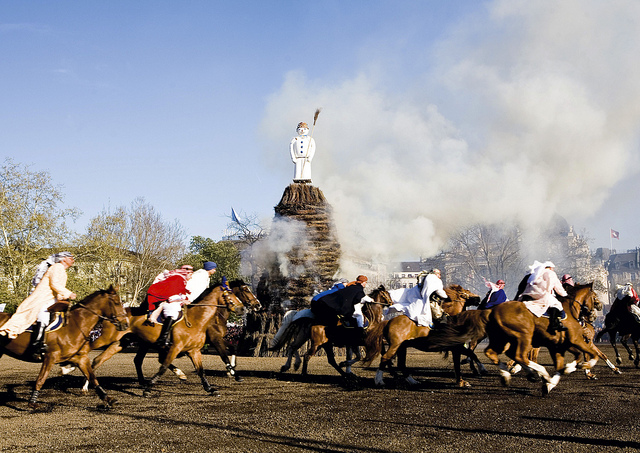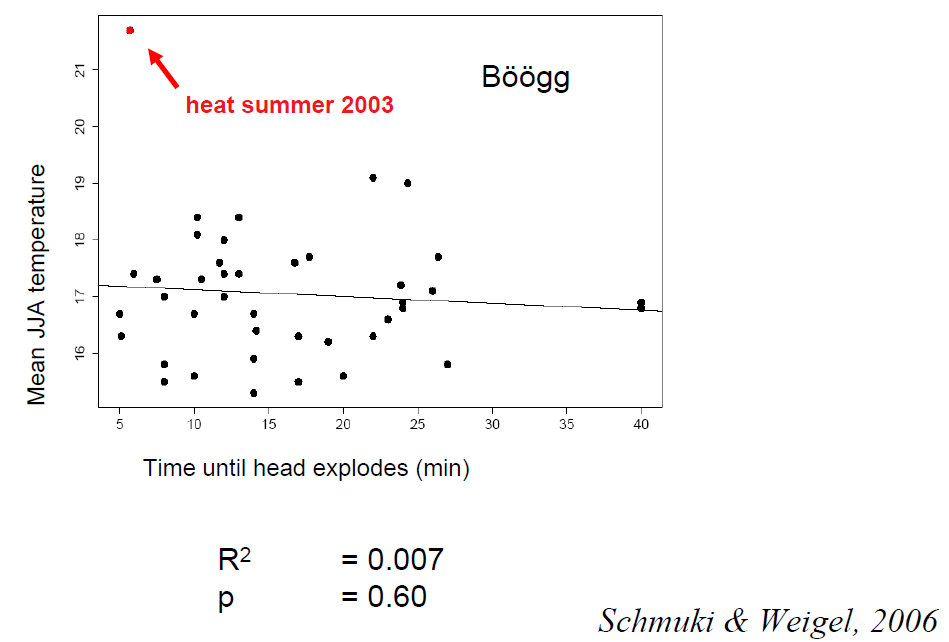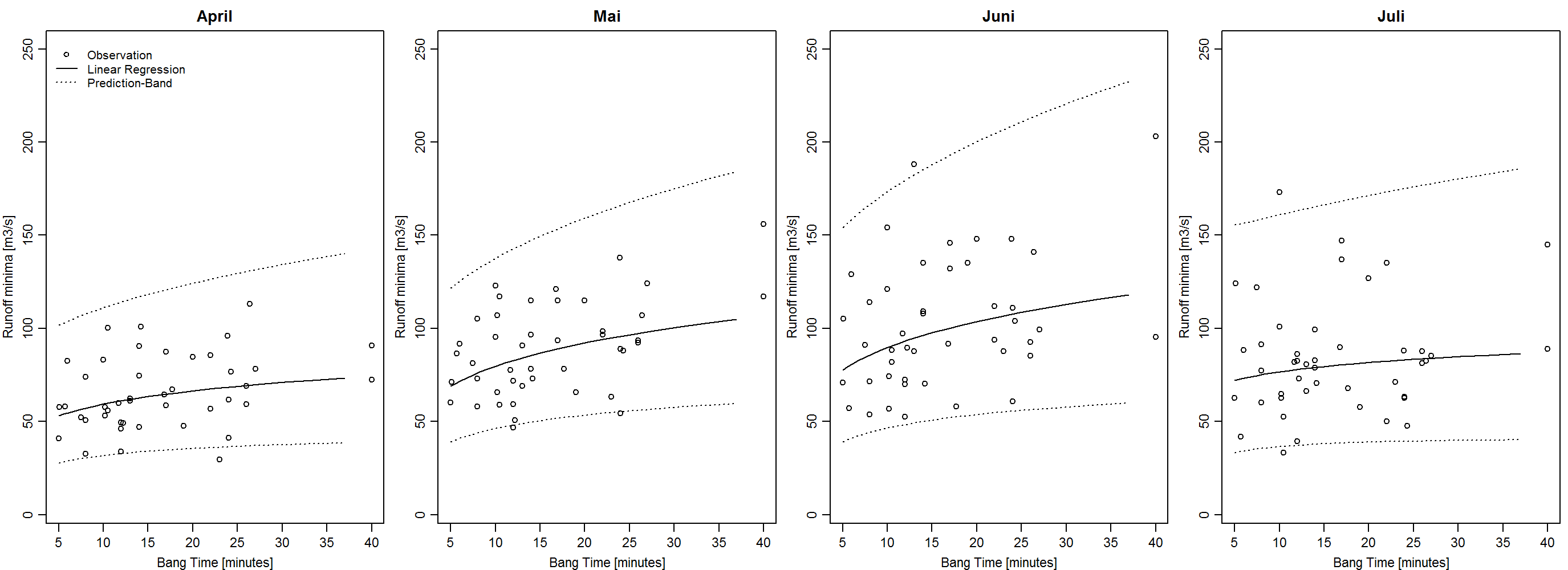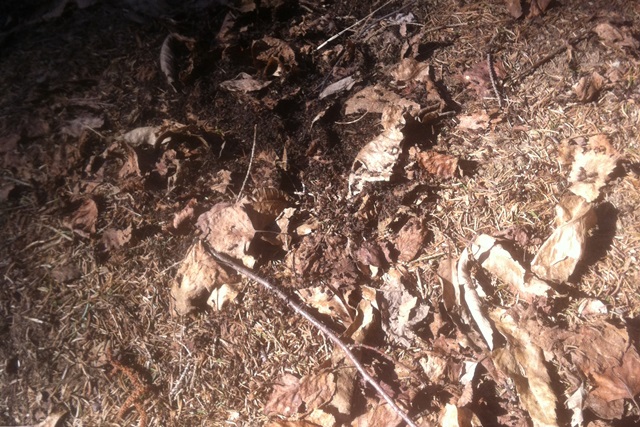“The Böögg Bang Theory” – or: Traditional seasonal forecasts in Switzerland
by Massimiliano Zappa, a HEPEX 2015 Guest Columnist
Dear readers, when last year the Paris-based HEPEX co-chair (the one with two first names) contacted me to ask whether I could have interest in writing a couple of columns for the HEPEX site I really underestimated how much fun this could be. I never thought in my life that I would be able to combine our Kings-Cake tradition on January 6th with my daily business (see my first post here). Also in this second column I was able to obtain a quite nice slot and combine the blog with:
- another tradition here in Switzerland;
- my absolutely favourite comedy movie;
- some words on seasonal forecasting and…
- my 40th birthday.
I guess you will have to wait one more blog to have a merely technical post (hopefully during an interesting flood event) and not a series of witty thoughts with some links to science topics.
But let’s begin with the more painful part of the blog post, and let me share with you that I spent the last days and hours of my 30ies writing for this column. When this post is published, I will have less than two days before joining the club of the 40ies (with some week of advance with respect of one of the HEPEX advisors, the one with the longest name). One day later, on April 13th, the traditional “Sächsilüüte” (or Secheläuten, “bells at 6 PM”) will take place in Zürich. For those among you that are unfamiliar with this tradition, I put here a link to WIKIPEDIA. There you can find plenty of information on this festivity (including a python script to calculate the date, just for the hard-core programmers among you). This festival usually takes place on the third Monday of April and it culminates with a seasonal forecast concerning the weather in the upcoming summer. What does then happen in Zürich at 6 PM?
Figure 1: “Böögg and Sechseläuten organizers (under hats or on horses)” [2]. Source: Zürich Tourismus
The climax of the “Sächsilüüte” festival is triggered after the 6 PM bell rings. A fire is triggered to burn a giant snowman (the “Böögg”) placed of the top of a pile of wood. In the head of the snowman, there are fireworks. The indicator for the seasonal prediction consists in stopping the time that it takes between triggering the fire and hearing the head “bang”. This “Böögg bang theory” is a single field indicator used to predict summer temperatures. The assumption is that the shorter is the “head bang time” the warmest will be the summer.
There have been some studies devoted to estimating the accuracy of the “Head bang time” as a predictor for summer temperature [1, 2]. The figure here below presents a verification of the skill of this traditional forecast within the period 1965 to 2005. No need to say that the “Head bang time” has a rather limited correlation with the target variable (JJA temperature). Similar “accuracy” (not shown) is achieved when correlating to the number of summer days (temperature above 25°C) or number of hot days (temperature above 30°C). Schmuki and Weigel also evaluated the skill of ECMWF dynamical forecasts and (good news) they outperformed the Böögg [1].
Figure 2: “Böögg Bang” as predictor of summer temperature in Zürich (from [1])
Figure 3: “Böögg Bang” as predictor of runoff minima for the Limmat in Zürich
Table 1: Statistical analysis of the relation between the “Böögg Bang” and low-flow in the Limmat river.
| April | May | June | July | |
| p-value | 0.076 | 0.01 | 0.032 | 0.393 |
| Sigma^2 | 0.093 | 0.071 | 0.103 | 0.131 |
| R^2 | 0.073 | 0.147 | 0.105 | 0.017 |
There are several other weather oracles (single indicators), which are similar to the “Böögg Bang theory”. Similar to the HEPEX list about operational HEPS around the world, you could use the comment field to present traditional seasonal predictions in your country. There are for sure numerous interesting examples to be reported.
The most famous single indicator for seasonal predictions is the one portrayed in my favorite comedy movie namely the 1993 “Groundhog day” film. The film is a romantic-comedy about a weather announcer being sent as every year to report on “Punxsutawney Phil”. He then remains stuck in a time loop that obliges him to witness “Groundhog day” over and over again (some estimates claim that he might have spent over 30 years in the loop. In other words, a kind of Montecarlo assimilation). He finally escape from the loop. My comment on this will close this blog post, so read further…
Traditional seasonal predictions based on soft data
The “Böögg” is not the only source of traditional seasonal prediction in Switzerland. There is a second source which is related to the “Muotathaler Wetterschmöcker” (“the weather smellers from the Muotathal”). According to myswitzerland.com: “The Muota valley weathermen, also named “Wetterschmöcker” in Swiss German, are much celebrated. Twice yearly these prophets present annual weather forecasts with much humour. The forecasts are strongly underpinned by outdoor observations.”
This prediction is issued by six elderly experts (so it is an expert-based ensemble). There is no written recipe about how to issue these forecasts. The six men observe nature such as anthills (see picture below), vegetation and soils prior to release their prediction. The predictions are evaluated and the guy having given the more reliable forecast receives a prize. So, basically, their predictions rely on knowledge of particular initial conditions, which is not a bad idea also in case of hydrometeorological predictions.
Figure 4: Anthill in the southern Swiss Alps at 1000 m.a.s.l. on Easter Monday 2015. Picture: M. Zappa
Seasonal hydrometeorological predictions
Seasonal predictions of weather and water resources are a current topic of interest within HEPEX. I highly welcome the announced workshop on this topic to be held at SMHI in September. My personal experience with such kind of prediction is rather limited. In recent years, we published climatology-based forecasts for 120 days on our drought.ch platform. Recently, we started a research project, in collaboration with MeteoSwiss and a private company, in order to explore possible added value of seasonal probabilistic predictions (sorry Dr. McFools) for hydropower production in Switzerland. We will first focus on downscaling the meteorological predictions, then explore the value of assimilation snow resources (for better initial conditions) and post-processing, and finally we will evaluate decision-making based on cost-loss considerations. We will report on this here as soon as we have something to show. I hope we will be able to come out with a useful tool for the hydropower operators, without ending in a endless loop such as the weather announcer from the movie I cited before.
By the way, I owe you a comment about the way he escaped from the time loop. After witnessing the same day over and over again (Montecarlo assimilation), he was able to predict every small wind gust and any critical event within the next 24 hours at this particular location, so that he could finally behave in order to fix multiple things and being released from the loop. How can we make treasure from this? Well, after being there so long he knew everything about the system. He was aware of all initial conditions, and this is I think something we should also put our efforts on, in order to improve our systems. As an hydrological forecaster, I am using ensemble meteorological forcing. I experienced also the use of ensemble initial conditions of the hydrological model, but this resulted in large CPU needs, very large spread, and superposition of uncertainties [4]. Is this a promising approach or am I already in a endless loop?
References and links:
- Schmuki D und Weigel AP. 2006. Saisonale Vorhersage in Tradition und Moderne: Vergleich der „Sommerprognose“ des Zürcher Bööggs mit einem dynamischen Klimamodell, Arbeitsberichte der MeteoSchweiz, 213, 41 pp.
- Brennwald MS, Livingstone DM and Kipfer R. 2011. Böögg Bang drives global climate change.
- Jörg-Hess S, Fundel F, Jonas T, and Zappa M. 2014. Homogenisation of a gridded snow water equivalent climatology for Alpine terrain: methodology and applications, The Cryosphere, 8, 471-485, doi:10.5194/tc-8-471-2014, 2014. [Direct Link]
- Zappa M, Jaun S, Germann U, Walser A, Fundel F. 2011. Superposition of three sources of uncertainties in operational flood forecasting chains. Atmospheric Research. . Thematic Issue on COST731. Volume 100, Issues 2-3, 246-262. doi:10.1016/j.atmosres.2010.12.005




April 10, 2015 at 18:14
Happy Birthday for Sunday!
April 13, 2015 at 20:58
Thanks Liz!
The Böögg Bang oracle today was stopped after 20:39
According ro Figures 2 and 3 this means a “cold summer” and reduced disposition to low flow in the Limmat basin.
We will see!
April 15, 2015 at 23:12
Will you bet on it?? See the probability for 2 meter Temperature to be below the lower tercile of the climatological distribution (issued 01/04/2015, for JJA): https://hepex.inrae.fr/wp-content/uploads/2015/04/Europe_prob32for32lower32third32of32the32distribution_2m32temperature_232months.gif
April 15, 2015 at 23:14
& here for the probability of being hot: https://hepex.inrae.fr/wp-content/uploads/2015/04/Europe_prob32for32upper32third32of32the32distribution_2m32temperature_232months.gif
April 16, 2015 at 05:27
Interesting, but I was thinking that one should be careful with ECMWF forecasts issued on April 1st since Dr McFools is on duty on that day
Cheers!
April 30, 2015 at 09:16
It’s clear to me that your figure 2 needs a non-linear fit to get the most from your model… I recommend you try a 40th order polynomial.